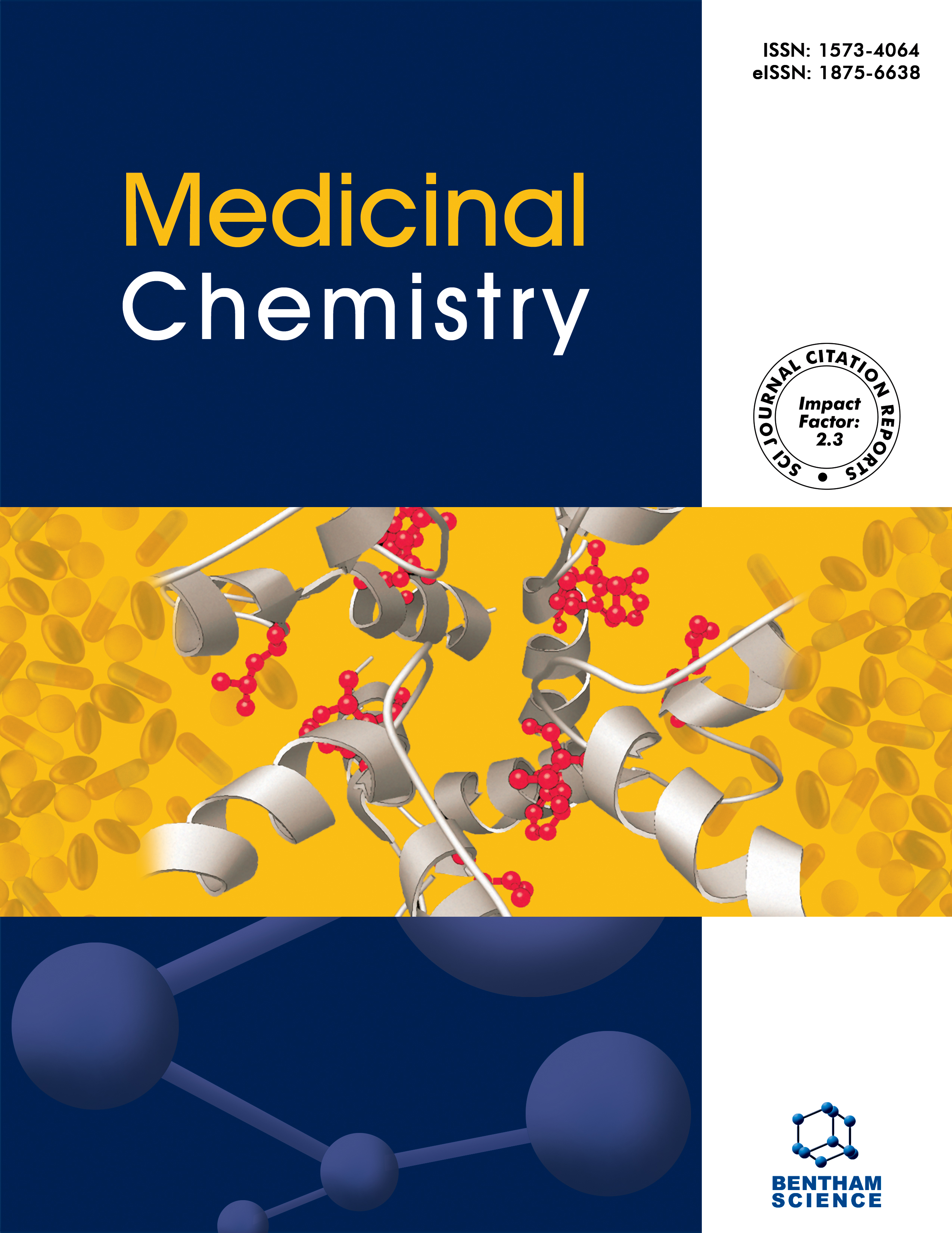- Home
- A-Z Publications
- Medicinal Chemistry
- Previous Issues
- Volume 19, Issue 6, 2023
Medicinal Chemistry - Volume 19, Issue 6, 2023
Volume 19, Issue 6, 2023
-
-
Prevention of Oxidative Stress and Diseases by Antioxidant Supplementation
More LessExcessive and uncontrolled oxidative stress can damage biomacromolecules, such as lipids, proteins, carbohydrates, and DNA, by free radical and oxidant overproduction. In this review, we critically discuss the main properties of free radicals, their implications in oxidative stress, and specific pathological conditions. In clinical medicine, oxidative stress can play a role in several chronic noncommunicable diseases, such as diabe Read More
-
-
-
Marine-derived Natural Products as Anticancer Agents
More LessCancer is a deadly human disease on the rise due to changes in lifestyle, nutrition, and global warming. Cancer is characterized by uncontrolled, disordered, and undesired cell division. About 60% of cancer medicines approved by the FDA are made from natural ingredients. Intensive efforts over the last decade to better understand the vast chemical diversity provided by marine life have resulted in an intriguing "marine pipel Read More
-
-
-
Skimmianine: Natural Occurrence, Biosynthesis, Synthesis, Pharmacology and Pharmacokinetics
More LessBy Ninh T. SonBackground: For years, plant materials collected from members of the family Rutaceae have been the subject of various phytochemical and pharmacological studies. In such works, skimmianine (SM) is a secondary metabolite type furoquinoline alkaloid, which can be seen as a major component available in medicinal plants of the family Rutaceae. Although there have been numerous phytochemical and biological expe Read More
-
-
-
Synthesis, Biological Evaluation, and Docking Studies of Open-Chain Carbohydrate Amides as Acetylcholinesterase Inhibitors
More LessIntroduction: Alzheimer’s disease is a multifactorial syndrome, which is not yet fully understood, causing memory loss, dementia, and, ultimately, death. Acetylcholinesterase inhibitors are the mainstay drugs that are used in disease-symptomatic treatment. In this work, we report a new synthetic route yielding sugar amides as low to moderate acetylcholinesterase inhibitors. Methods: Commercially available diacetone glu Read More
-
-
-
Synthesis and Anticancer Activity of Novel Chromene Derivatives, Chromeno[2,3-d][1,3]Oxazines, and Chromeno[2,3-d]Pyrimidines
More LessAuthors: Mahmoud N.M. Yousif, Usama Fathy and Nabil M. YousifSeveral chromene derivatives have a wide variety of biological and pharmacological activity. They had anticancer activity, antimicrobial activity, antituberculosis activity, anticonvulsant activity, antidiabetic activity, antichlolinesterase activity, and inhibitor of monoamine oxidase activity. The above-mentioned activities directed us to synthesize novel chromene derivatives, chromeno[2,3-d][1,3]oxazines, and chromeno[2,3-d]p Read More
-
-
-
Synthesis and Antibacterial Activity of Erythromycin 9-Acylhydrazone Derivates
More LessAuthors: Zhiling Cao, Wei Zheng, Maolong Huang, Xinran Yao, Wenrong Zhu, Lanjun Sheng, Zaixiu Pan, Yuzong Bian, Tian Zhang and Cong ZhuSome species of Marine bacteria pose great risks to human and mariculture organisms. Meanwhile, Vibrio harveyi and Vibrio parahaemolyticus strains have acquired resistance to many antibiotics. Objective: A novel series of erythromycin 9-acylhydrazone derivatives were synthesized and evaluated for their in vitro antibacterial activity against marine pathogens. Methods: The site-selective N-acylation of erythromycin hydr Read More
-
-
-
Comparative Computational Screening of Natural-based Partial Agonists for PPARγ Receptor
More LessAuthors: Leila Moradihaghgou, Reinhard Schneider, Bahram M. Zanjani and Taher HarkinezhadIntroduction: The nuclear transcription factor PPARγ, which can modulate cell growth via proliferation and apoptosis-related mechanisms, is a promising target in cancer therapy. This study aims to focus on PPARγ as the target and use virtual screening to find hits. Methods: A set of 5,677 flavonoid compounds were filtered by subjecting them to descriptor-based drug-likeness and ADMET strategies to discover drug-like com Read More
-
Volumes & issues
-
Volume 21 (2025)
-
Volume 20 (2024)
-
Volume 19 (2023)
-
Volume 18 (2022)
-
Volume 17 (2021)
-
Volume 16 (2020)
-
Volume 15 (2019)
-
Volume 14 (2018)
-
Volume 13 (2017)
-
Volume 12 (2016)
-
Volume 11 (2015)
-
Volume 10 (2014)
-
Volume 9 (2013)
-
Volume 8 (2012)
-
Volume 7 (2011)
-
Volume 6 (2010)
-
Volume 5 (2009)
-
Volume 4 (2008)
-
Volume 3 (2007)
-
Volume 2 (2006)
-
Volume 1 (2005)
Most Read This Month
Article
content/journals/mc
Journal
10
5
false
en


